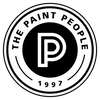Coverage: Masking Liquid H 2 0 will cover up to 400 sq.ft per gallon @ 6.0 mils wet, 3.0 mils dry or 3000 linear feet of 1” stripe.
Surface Preparation: All surfaces must be clean, dry and free of
any foreign material. Check glass for any defects and report to homeowner or contractor. All bare wood, primed metal, aluminum must be clean, porous and free of any defects. Dull glossy surfaces by sanding. Do not use on bare wood if it is to be stained. Do not use on stained, frosted, etched, tinted, or textured and plastic glass or PLEXIGLASS. It is advisable to try a test area first to check for adhesion, peelibility (over glass) and compatibility of the finish coat. Apply when ambient temperature is between 50° F and 90°F. Remember in cold areas and hot humid areas window temperatures will be different from air temperatures. Liquid masking tape will adhere to vinyl so use only as a primer.
Application: Apply when air and surface temperature is
between 50°F and 90°F. Apply with a quality nylon brush, 1” nap lambskin roller or, spray (airless or HVLP). When brushing apply a 1” band on the glass and on the frame if priming. When rolling a 4” roller would be practical for coating glass and frames.
Spray: For best results, strain Masking Liquid H2O in to a clean pot. Dilute with 1 pint of water per gallon of Liquid Masking H2O and mix thoroughly. Use a .017(417) tip at low pressure and spray a test area.
Adjust pressure and volume to achieve proper atomization, giving a smooth film free of spatters and orange peel. Do not continue spraying until proper atomization is achieved. Mix Liquid Masking H2O occasionally while in use.
Cleanup: Clean spills and spatters immediately with soap and warm water. Clean hands and tools immediately after use with soap and warm water. After cleaning, flush spray equipment with mineral spirits to prevent rusting of the equipment. Follow manufacturer’s safety recommendations when using mineral sprits.
Removal: Glass scores easily so be careful when removing Masking Liquid H2O. Using a dull blade, start in one corner and work around cutting close to the sash. Peel Masking Liquid H2O away carefully. If Masking Liquid H2O is difficult to remove, wet the surface with warm water on a sponge or wet cloth. In colder temperatures, it may be necessary to use a hot air blower to soften the Masking Liquid H2O. Do not allow Masking Liquid H2O to remain on glass for more than 30 days, particularly in hot, dry climates.
Warning! Removal of old paint by sanding, scraping or other means may generate dust or fumes that contain lead. Exposure to lead dust or fumes may cause brain damage or other adverse affects, especially in children or pregnant women. Controlling exposure to lead or other hazardous substances requires the use of proper
protective equipment, such as a properly fitted respirator (NIOSH approved) and proper containment and cleanup. For more information, call the National Lead Information Center at 1-800-424-
LEAD (in US) or contact your local health authority.
Warning! Do Not apply lacquers or any finish coating that contain strong solvents such as ketones or alcohol.






